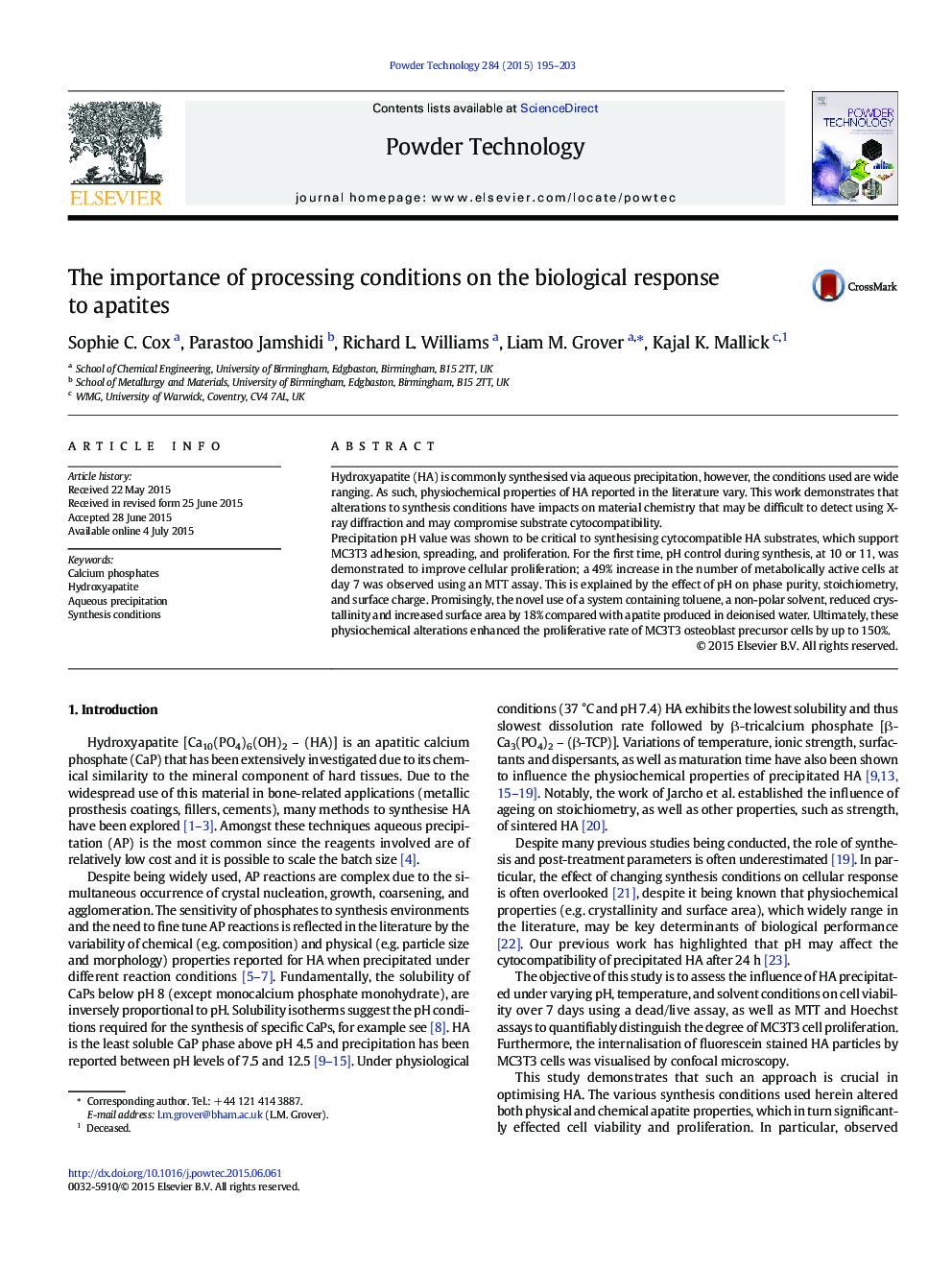| Article ID | Journal | Published Year | Pages | File Type |
|---|---|---|---|---|
| 235340 | Powder Technology | 2015 | 9 Pages |
•Hydroxyapatite cytocompatibility may be compromised by processing conditions.•pH value and control during apatite synthesis affect bulk and surface chemistry.•Cell proliferation was improved by maintaining pH at 10 or 11 during HA synthesis.•Non-polar solvents may be advantageously used to alter precipitate properties.•Toluene significantly reduced crystallinity and increased precipitate surface area.
Hydroxyapatite (HA) is commonly synthesised via aqueous precipitation, however, the conditions used are wide ranging. As such, physiochemical properties of HA reported in the literature vary. This work demonstrates that alterations to synthesis conditions have impacts on material chemistry that may be difficult to detect using X-ray diffraction and may compromise substrate cytocompatibility.Precipitation pH value was shown to be critical to synthesising cytocompatible HA substrates, which support MC3T3 adhesion, spreading, and proliferation. For the first time, pH control during synthesis, at 10 or 11, was demonstrated to improve cellular proliferation; a 49% increase in the number of metabolically active cells at day 7 was observed using an MTT assay. This is explained by the effect of pH on phase purity, stoichiometry, and surface charge. Promisingly, the novel use of a system containing toluene, a non-polar solvent, reduced crystallinity and increased surface area by 18% compared with apatite produced in deionised water. Ultimately, these physiochemical alterations enhanced the proliferative rate of MC3T3 osteoblast precursor cells by up to 150%.
Graphical abstractFigure optionsDownload full-size imageDownload as PowerPoint slide
